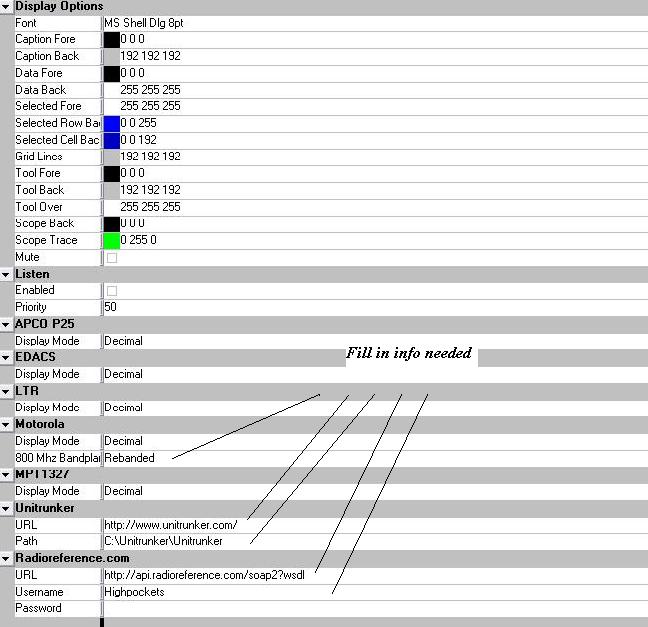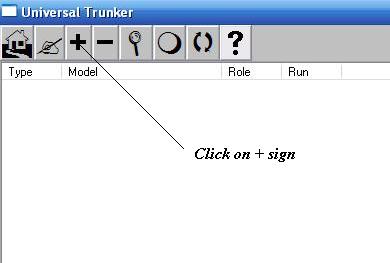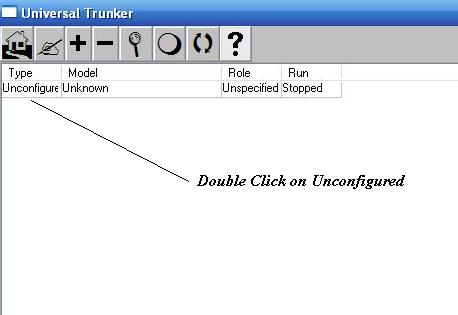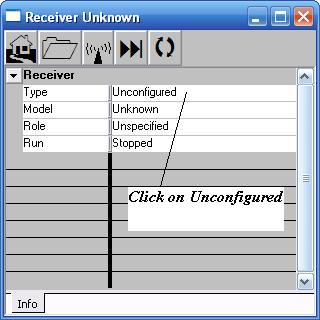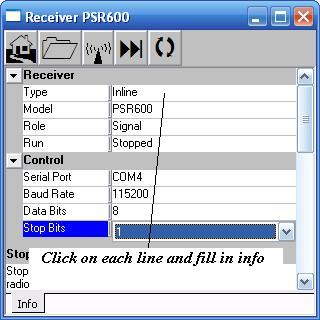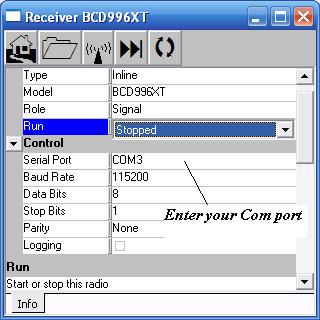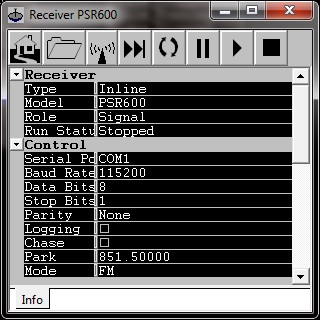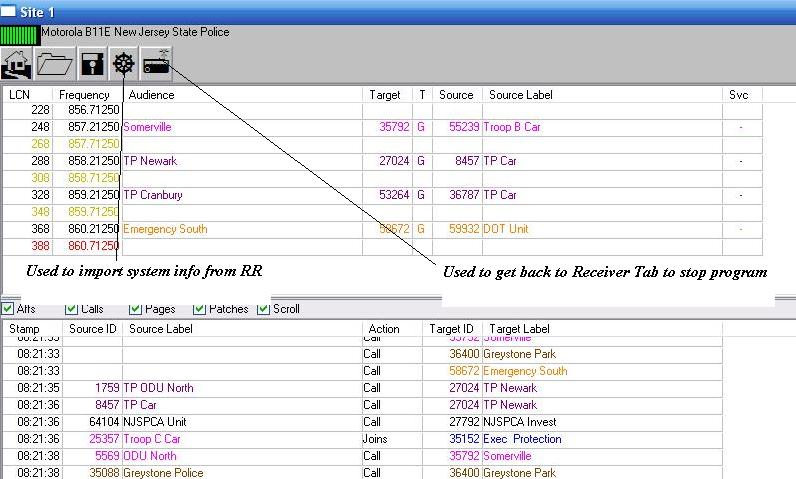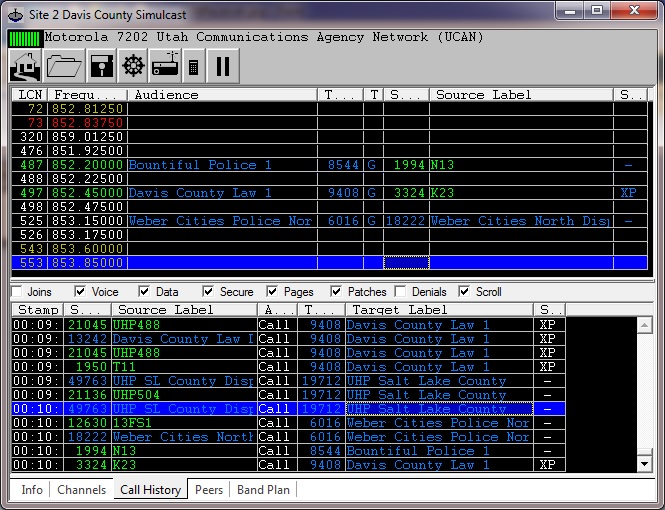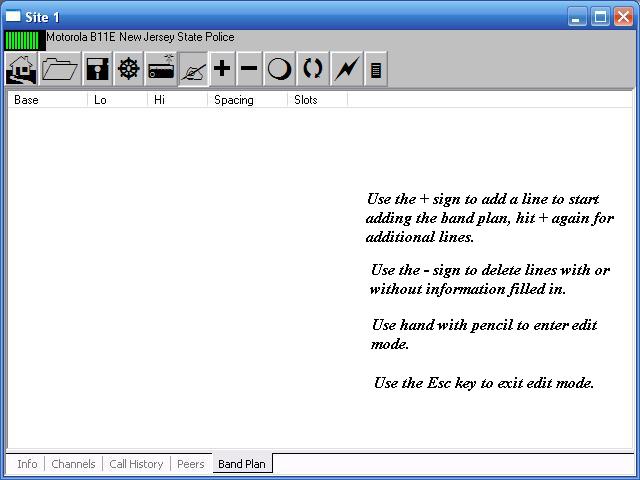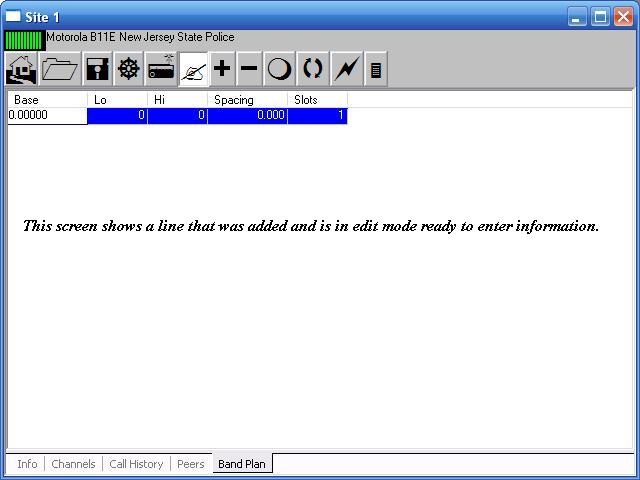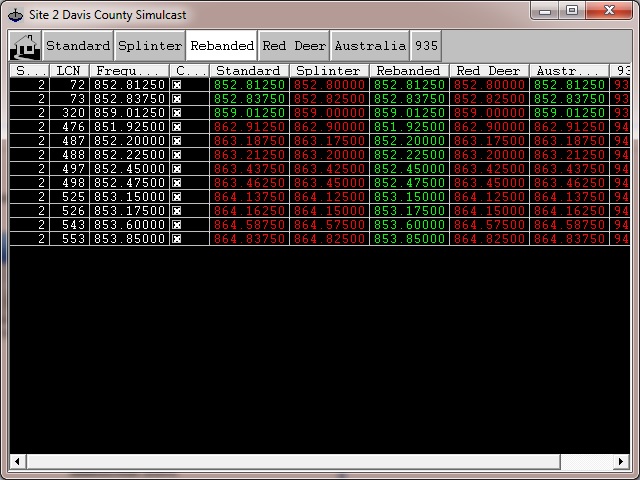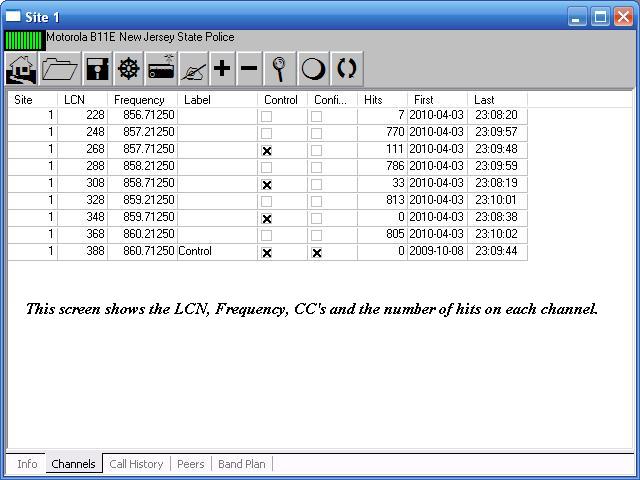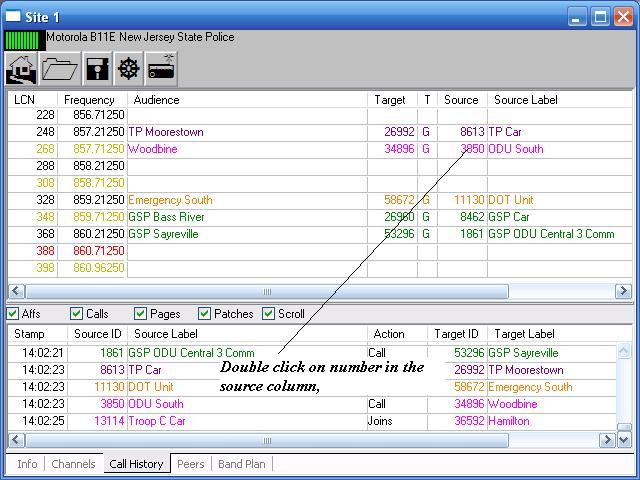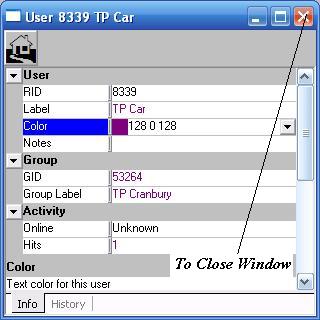UniTrunker Guide
Highpockets (Talk | contribs) (→Start UniTrunker running) |
RyanSimpkins (Talk | contribs) |
||
| (74 intermediate revisions by 4 users not shown) | |||
| Line 1: | Line 1: | ||
[[Category:Scanning]] | [[Category:Scanning]] | ||
[[Category:Tutorials]] | [[Category:Tutorials]] | ||
| + | [[Category:Software]] | ||
[[Image:Unitrunker.JPG]] | [[Image:Unitrunker.JPG]] | ||
| + | |||
| + | ==IMPORTANT ANNOUNCEMENT (13 MAR 2021)== | ||
| + | The Utah Communications Agency Network (UCAN) and the Utah Communications Authority (UCA) will be decommissioning the current 800Mhz Motorola trunking system by the end of 2023. UCAN is the main Public Safety trunked system used throughout the state of Utah and is one of the largest systems in the nation. Over 100 Motorola Trunking sites will be shut down and replaced with an all-digital P25 system using 700Mhz. It will impact all Utah public safety and services agencies. After the change, a large body of the information on this site will be out of date. | ||
| + | |||
| + | THIS SITE WILL BE GOING AWAY AFTER THE TRANSITION IS COMPLETE (Q1 2024). | ||
| + | |||
| + | Your scanner or radios must support P25 digital and will need to be reprogrammed to continue to hear anything on the new system. The community isn't sure how much of the traffic will be encrypted after the switch. If regular channels are encrypted, it will become illegal to attempt to monitor that traffic. We can only hope that if the UCA chooses to do this, they will offer time-delayed or filtered streams of radio transmissions to the public. The public has a special interest in monitoring the activity and operations of public safety agencies. Recent documented abuses by law enforcement officers who have covered up activities or mistakes by abusing laws originally meant to protect victims are a prime example. | ||
| + | |||
| + | Please copy any information you want or need from this site prior to December, 2022. For additional details see the RadioReference Utah forum. An effort is underway to save some content on the RadioReference Utah wiki: https://wiki.radioreference.com/index.php/Utah_(US). | ||
| + | |||
| + | 73 de N2OW, | ||
| + | |||
| + | -Ryan | ||
| + | |||
| + | |||
===A Guide to Get UniTrunker Up and Running=== | ===A Guide to Get UniTrunker Up and Running=== | ||
| Line 7: | Line 23: | ||
===DISCLAIMER and NOTE:=== | ===DISCLAIMER and NOTE:=== | ||
| + | <div style="margin: 0; margin-right:10px; border: 2px solid #B6B6B6; padding: 0 1em 1em 1em; background-color:#ccffff;align:right;"> | ||
| + | |||
| + | The images on this page are from UniTrunker V1.0.0.11 and the instructions are geared for users of the '''GRE PSR-500, PSR-600, PSR-310, PSR-410, PSR 700, PSR-800''' and '''Radio Shack Pro-106, Pro-107 and Pro-197'''. Others can follow this guide but will have to make allowances for the type of scanner used which will provide the feed of the Control Channel Data Stream. The instructions are also geared to a Motorola Type II 800 MHz trunked system. After reading these, you should be able to adjust things to suit your particular circumstances. | ||
| + | |||
| + | The current preview versions of UniTrunker support the use of inexpensive (approximately $15) RTL-SDR dongles to receive the trunking channel data. This allows people to use the program without having to tap scanner discriminators or tie up expensive newer scanners to dump control channel data. Users have been successful in using multiple dongles to function as both control channel receivers as well as voice channel receivers. | ||
| − | The | + | The steps in this guide were actually used to get UniTrunker up and running with a PSR-600 as the data stream input device. The procedure may be different for other model scanners so users/visitors to this page are invited to make corrections or additions. |
| − | |||
| − | ''' | + | '''UniTrunker will also work with the following Uniden Scanners: BCT15X - BC346XT - BCD396XT - BCD996XT''' |
| + | </div><br> | ||
| + | <div style="margin: 0; margin-right:10px; border: 2px solid #B6B6B6; padding: 0 1em 1em 1em; background-color:#ffaa88;align:right;"> | ||
| + | '''Check the UniTrunker site periodically''' for the latest version of the program. These instructions should give you enough info to get you started. Latest version as of July 27, 2014 is '''1.0.28.4'''. The latest preview version as of July 27, 2014 is '''1.0.28.4'''. | ||
| + | </div><br> | ||
---- | ---- | ||
| Line 20: | Line 44: | ||
Download the [http://www.unitrunker.com/download/ UniTrunker program] to your computer and make sure you have a connection to your scanner to receive the feed from it to the computer. Those using GRE-500/600s or their RS clones will use the same cable used to program the scanner. Run the software and you will find the screen below to open first. If it does not, click on the Options tab at the bottom of the page. | Download the [http://www.unitrunker.com/download/ UniTrunker program] to your computer and make sure you have a connection to your scanner to receive the feed from it to the computer. Those using GRE-500/600s or their RS clones will use the same cable used to program the scanner. Run the software and you will find the screen below to open first. If it does not, click on the Options tab at the bottom of the page. | ||
| − | Go down the page to '''Motorola''' and make sure it says Decimal for Display Mode. If it does not, just click on Display Mode > click the drop-down menu and select Decimal. Click on 800 MHz > Click the drop-down menu > select Rebanded (if you are in Utah, otherwise you might want to select North America). | + | Go down the page to '''Motorola''' and make sure it says Decimal for Display Mode. If it does not, just click on Display Mode > click the drop-down menu and select Decimal. Click on 800 MHz > Click the drop-down menu > select Rebanded (if you are in Utah, otherwise you might want to select North America). |
| Line 55: | Line 79: | ||
| + | [[Image:UTUniden.JPG]] | ||
| + | |||
| + | '''Example for Uniden Scanner''' | ||
| + | |||
| + | |||
| + | <div style="margin: 0; margin-right:10px; border: 2px solid #B6B6B6; padding: 0 1em 1em 1em; background-color:#ffcc99;align:right;"> | ||
'''If your using a scanner with a Discriminator Tap and you were using the Retro Version and want to change to the Windows version use the following directions:''' | '''If your using a scanner with a Discriminator Tap and you were using the Retro Version and want to change to the Windows version use the following directions:''' | ||
| Line 72: | Line 102: | ||
Adjust recording level according to instructions on the Unitrunker site. | Adjust recording level according to instructions on the Unitrunker site. | ||
| − | + | UniTrunker Link: http://www.unitrunker.com/level.html | |
| + | </div><br> | ||
| + | The current version of UniTrunker gives a button window with receiver options (shown below) when you press the add receiver button. Much of the configuration is pre-done by selecting the appropriate receiver type. For a discrminiator tapped receiver, select "Signal". For an inline receiver such as the PSR600 select "Inline". If using an RTL dongle as a receiver select "RTL2832". | ||
| + | |||
| + | [[Image:AddReceiver.jpg]] | ||
---- | ---- | ||
| Line 82: | Line 116: | ||
---- | ---- | ||
| − | ===Start UniTrunker | + | ===Start UniTrunker Running=== |
| − | |||
| + | Once you have verified each line in the particular receiver's window is filled in correctly (most of this should have been auto-filled when you selected your receiver type previously), you can click on the start arrow or stop square on the toolbar to start or stop the receiver. The UniTrunker program should now be receiving the data stream from the System Control Channel that you selected on your scanner. '''Make sure your have the right Com Port selected!''' Additionally, from the main UniTrunker window, you can select the receiver and click on the start or stop buttons on the toolbar here to start or stop a particular receiver. | ||
| − | [[Image: | + | |
| + | [[Image:UT_rcvrStart.jpg]] | ||
| Line 102: | Line 137: | ||
At this point, you should be up and running! | At this point, you should be up and running! | ||
| − | === | + | ---- |
| + | |||
| + | ===Screen shot up and running=== | ||
| + | [[Image:UT_callHistory.jpg]] | ||
| + | <br><br> | ||
| + | |||
| + | '''Here is an explaination of various Windows displayed in Unitrunker:''' | ||
| + | |||
| + | http://www.unitrunker.com/windows.html | ||
| + | |||
| + | |||
| + | ---- | ||
| + | ===Call type codes=== | ||
| + | <div style="margin: 0; margin-right:10px; border: 2px solid #0043DF; padding: 0 1em 1em 1em; background-color:#ffffff; align:right;"> | ||
'''Motorola Systems''' | '''Motorola Systems''' | ||
| Line 129: | Line 177: | ||
*Dig - Digital (Provoice/Aegis) Voice Call | *Dig - Digital (Provoice/Aegis) Voice Call | ||
*EmD - Emergency Digital Voice Call | *EmD - Emergency Digital Voice Call | ||
| + | </div><br> | ||
| + | ---- | ||
| − | === | + | ===Band Plan Tab=== |
| − | [[Image: | + | |
| − | + | This is where you can add or edit a Band Plan if necessary. | |
| − | + | ||
| − | + | ||
| − | + | [[Image:UT9.JPG]] | |
| + | |||
| + | |||
| + | [[Image:UT11.JPG]] | ||
| + | |||
| + | Additionally, newer versions of UniTrunker have a Band Plan Wizard button on toolbar on top of the Call History window. It looks like a calculator: | ||
| + | [[Image:UT_bandPlanCalc.jpg]] | ||
| + | |||
| + | When you click on the Band Plan Wizard button it brings up the following window. From here you can select the type of standard band plan, and UniTrunker will automatically update the site's band plan for you. | ||
| + | |||
| + | [[Image:UT_bandPlanPage.jpg]] | ||
| + | ---- | ||
| + | |||
| + | ===Channels Tab=== | ||
| + | |||
| + | |||
| + | [[Image:UT12.JPG]] | ||
| + | |||
| + | ---- | ||
| + | |||
| + | ===Adding A Name To Radio ID's=== | ||
| + | |||
| + | |||
| + | [[Image:UTNameID.JPG]] | ||
| + | |||
| + | |||
| + | You can add a name to a radio ID by double clicking on the number in the source column, and this screen will appear. | ||
| + | |||
| + | |||
| + | [[Image:UTID.JPG]] | ||
| + | |||
| + | |||
| + | You enter a name in the Label Column, you can also assign a color to that name. | ||
| + | You exit by clicking on the RED X to get back to the Call History screen. | ||
| + | |||
| + | |||
| + | <div style="margin: 0; margin-right:10px; border: 2px solid #B6B6B6; padding: 0 1em 1em 1em; background-color:#ccffff;align:right;"> | ||
| − | + | '''Qlajlu''' | |
| + | </div><br> | ||
Latest revision as of 21:41, 16 March 2021
Contents |
IMPORTANT ANNOUNCEMENT (13 MAR 2021)
The Utah Communications Agency Network (UCAN) and the Utah Communications Authority (UCA) will be decommissioning the current 800Mhz Motorola trunking system by the end of 2023. UCAN is the main Public Safety trunked system used throughout the state of Utah and is one of the largest systems in the nation. Over 100 Motorola Trunking sites will be shut down and replaced with an all-digital P25 system using 700Mhz. It will impact all Utah public safety and services agencies. After the change, a large body of the information on this site will be out of date.
THIS SITE WILL BE GOING AWAY AFTER THE TRANSITION IS COMPLETE (Q1 2024).
Your scanner or radios must support P25 digital and will need to be reprogrammed to continue to hear anything on the new system. The community isn't sure how much of the traffic will be encrypted after the switch. If regular channels are encrypted, it will become illegal to attempt to monitor that traffic. We can only hope that if the UCA chooses to do this, they will offer time-delayed or filtered streams of radio transmissions to the public. The public has a special interest in monitoring the activity and operations of public safety agencies. Recent documented abuses by law enforcement officers who have covered up activities or mistakes by abusing laws originally meant to protect victims are a prime example.
Please copy any information you want or need from this site prior to December, 2022. For additional details see the RadioReference Utah forum. An effort is underway to save some content on the RadioReference Utah wiki: https://wiki.radioreference.com/index.php/Utah_(US).
73 de N2OW,
-Ryan
A Guide to Get UniTrunker Up and Running
DISCLAIMER and NOTE:
The images on this page are from UniTrunker V1.0.0.11 and the instructions are geared for users of the GRE PSR-500, PSR-600, PSR-310, PSR-410, PSR 700, PSR-800 and Radio Shack Pro-106, Pro-107 and Pro-197. Others can follow this guide but will have to make allowances for the type of scanner used which will provide the feed of the Control Channel Data Stream. The instructions are also geared to a Motorola Type II 800 MHz trunked system. After reading these, you should be able to adjust things to suit your particular circumstances.
The current preview versions of UniTrunker support the use of inexpensive (approximately $15) RTL-SDR dongles to receive the trunking channel data. This allows people to use the program without having to tap scanner discriminators or tie up expensive newer scanners to dump control channel data. Users have been successful in using multiple dongles to function as both control channel receivers as well as voice channel receivers.
The steps in this guide were actually used to get UniTrunker up and running with a PSR-600 as the data stream input device. The procedure may be different for other model scanners so users/visitors to this page are invited to make corrections or additions.
UniTrunker will also work with the following Uniden Scanners: BCT15X - BC346XT - BCD396XT - BCD996XT
Check the UniTrunker site periodically for the latest version of the program. These instructions should give you enough info to get you started. Latest version as of July 27, 2014 is 1.0.28.4. The latest preview version as of July 27, 2014 is 1.0.28.4.
Options
Download the UniTrunker program to your computer and make sure you have a connection to your scanner to receive the feed from it to the computer. Those using GRE-500/600s or their RS clones will use the same cable used to program the scanner. Run the software and you will find the screen below to open first. If it does not, click on the Options tab at the bottom of the page.
Go down the page to Motorola and make sure it says Decimal for Display Mode. If it does not, just click on Display Mode > click the drop-down menu and select Decimal. Click on 800 MHz > Click the drop-down menu > select Rebanded (if you are in Utah, otherwise you might want to select North America).
Go to the right scroll bar and drag it to the bottom. You will see a place to enter the UniTrunker URL (as shown) and the next line down enter the URL for Radio Reference (also as shown) and then your log-in credentials.
Receiver
Click on the Receivers tab to open this page.
Clicking on the "+" sign creates the line for you to enter the type of scanner and other info needed. This image was taken using a PSR-600 which is using an inline feed and although it shows "PSR500" it is perfectly acceptable because, other than the case, the PSR-500 and PSR-600 are the same scanner.
Double click on the line showing Unconfigured (See line pointing to it).
You should now be able to fill in the info for the program to operate. Start with the Unconfigured box and work your way down.
Example for Uniden Scanner
If your using a scanner with a Discriminator Tap and you were using the Retro Version and want to change to the Windows version use the following directions:
From the Receivers tab, click "+". Double-click on the "Unconfigured" receiver. Set the receiver's Type to "Signal"; this will cause additional sections to appear - including Signal and Decode. For receiver model - type in something meaningful like "R8500". For receiver role - use "Signal". Leave the receiver "Run" state at "Stopped" for now. Under the Signal section, fill in the settings comparable to your Unitrunker Retro configuration. Sample Rate of 44100, 48000 or 96000. Sample Size of 16 bits is recommended. Channel of "Mono" is good - unless you were using something different in Retro. Leave the Decode and Feeds sections alone for now. Go back to the receiver "Run" state and set it to "running". Click on the "Scope" tab to see the waveform. Adjust recording level according to instructions on the Unitrunker site.
UniTrunker Link: http://www.unitrunker.com/level.html
The current version of UniTrunker gives a button window with receiver options (shown below) when you press the add receiver button. Much of the configuration is pre-done by selecting the appropriate receiver type. For a discrminiator tapped receiver, select "Signal". For an inline receiver such as the PSR600 select "Inline". If using an RTL dongle as a receiver select "RTL2832".
Place scanner in proper mode
To set your scanner in the analyzer mode, press the TSYS soft key (F2) on the front of the scanner. Then press the Analyz soft key (F3) on the front of the scanner and using the 5-way key, scroll up or down to find the Control Channel you wish to watch. When you stop scrolling, that will put it in the proper mode to run the Control Channel data stream to the UniTrunker Program.
Start UniTrunker Running
Once you have verified each line in the particular receiver's window is filled in correctly (most of this should have been auto-filled when you selected your receiver type previously), you can click on the start arrow or stop square on the toolbar to start or stop the receiver. The UniTrunker program should now be receiving the data stream from the System Control Channel that you selected on your scanner. Make sure your have the right Com Port selected! Additionally, from the main UniTrunker window, you can select the receiver and click on the start or stop buttons on the toolbar here to start or stop a particular receiver.
Receiving
After about 10 to 15 seconds, you will see this screen and you should start seeing activity as TGs join and leave the program. To stop the program, click on the icon that looks like a Radio and the pop-up will return so you can move from running to stopped by clicking the "running" box. The text in the Audience Column can be imported from RadioReference.
At this point, you should be up and running!
Screen shot up and running
Here is an explaination of various Windows displayed in Unitrunker:
http://www.unitrunker.com/windows.html
Call type codes
Motorola Systems
- None - Analog
- All - All TG's
- XP - Patch
- EXP - Emergency Patch
- EMS - Emergency Multi Select
- MS - Multi Select
- DIG - Digital Voice
- DAT - Digital All TG's
- DEM - Digital Emergency
- DXP - Digital Patch
- DEX - Digital Emergency Cross Patch
- DEM - Digital Emergency Multi Select
- DMS - Digital Multi Select
EDACS Systems
- Fon - Telephone Call
- Tst - LCN Tester
- Dat - Data Call
- Ana - Analog Voice Call
- Emg - Emergency Analog Voice Call
- Dig - Digital (Provoice/Aegis) Voice Call
- EmD - Emergency Digital Voice Call
Band Plan Tab
This is where you can add or edit a Band Plan if necessary.
Additionally, newer versions of UniTrunker have a Band Plan Wizard button on toolbar on top of the Call History window. It looks like a calculator:
![]()
When you click on the Band Plan Wizard button it brings up the following window. From here you can select the type of standard band plan, and UniTrunker will automatically update the site's band plan for you.
Channels Tab
Adding A Name To Radio ID's
You can add a name to a radio ID by double clicking on the number in the source column, and this screen will appear.
You enter a name in the Label Column, you can also assign a color to that name.
You exit by clicking on the RED X to get back to the Call History screen.
Qlajlu

